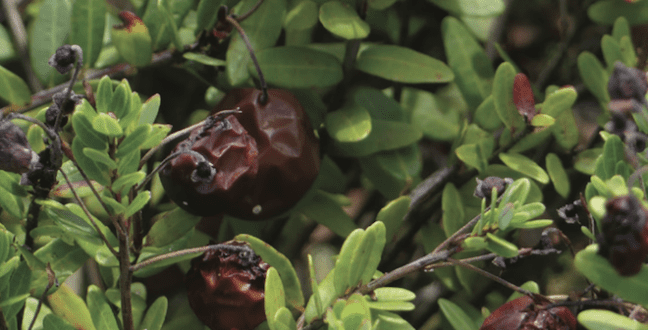

Mar 22, 2022Challenging analysis pursued to curb cranberry rot
University of Wisconsin-Extension fruit pathologist Leslie Holland and others are striving to develop a holistic approach for managing cranberry fruit rot, a fungal disease caused by multiple factors – many of which are not fully understood.
Speaking at the 2022 Wisconsin State Cranberry Growers Association winter meeting, Holland said cranberry fruit rot is a complex of at least 12 different species of fungi that causes fruit losses both in the field and in storage. In Massachusetts and New Jersey, cranberry fruit rot tends to show up year after year, while the disease occurs more sporadically on Wisconsin cranberry marshes.
Holland is collaborating with plant pathologists, plant physiologists, plant breeders and others involved in cranberry research in the major U.S. cranberry growing regions.
“What we’re trying to do is better understand all the factors that lead to the development of fruit rot to come up with a holistic control strategy. We’re also lacking tools to predict epidemics, especially in a place like Wisconsin where we have more episodic fruit rot events. Having a tool that can allow us to predict and make decisions would be really critical for these fruit rot epidemics,” Holland said.
Current management practices of well-timed fungicide applications during blossom time are effective at reducing disease incidence, but environmental and cultural practices influence the incidence and severity in the field. Due to the nature of the fruit rot fungi, they may remain in cranberry beds season after season as well, Holland said.
Holland also noted that cranberry growers are facing a diminishing number of fungicides approved for use in controlling cranberry fruit rot.
While there are some cranberry varieties that show resistance to cranberry fruit rot, the mechanism for that resistance is unclear. There is also limited knowledge of the impacts of environmental factors and plant stress on the incidence of cranberry fruit rot, Holland said.
During the 2021 growing season, Holland and graduate student Evan Lozano placed 30 fungal spore traps on a commercial Wisconsin cranberry marsh to study fungal spore dispersal. Samples were collected about every four days from mid to late June. Holland noted that the bloom period progressed quickly this past season, so no spore trapping was done in July.
“For me as a plant pathologist, fungal spore dispersal is interesting to study. But why should you as a cranberry grower care? I think it’s meaningful because we can try to understand and ensure that the fungicide applications we are making are on target with the dispersal patterns of the fungi that we are trying to control,” Holland said.


The primary fruit rot pathogens Holland and Lozano found in their spore traps were colletotrichum or bitter rot and Allantophomopsis which is associated with black rot.
“The black rot was an interesting result as black rot is typically seen at harvest. Finding it this early in bloom was of interest to us,” Holland said.
Not found in the spore traps was Coleophoma or ripe rot, which surprised Holland. In previous assays done toward the end of the bloom period and early fruit set, coleophoma tended to show up during this period. Holland surmised that if sampling had been done into July, the results might have been different.
Another part of the study assessed latent infections throughout the season. Plant samples were collected every one to three weeks from May to September to test for fruit rot before visible signs of infections were observed.
The early findings of the 2021 study showed colletotrichum was present primarily in fruits and leaf tissue. “We didn’t really see this coming from runners or the woody stems of uprights. We first started to see this pop up in July and then it ramped up a little bit more in August,” Holland said.
The study found allantophomopsis present in all tissues for the entire season in the sampled beds. Another fruit rot pathogen – phomopsis – was found in high levels in June but not detected after that, Holland said.
Because so many factors influence cranberry fruit rot development, Holland said the best approach is to prevent introduction of the pathogens into new plantings. Since cranberries are propagated vegetatively, Holland is researching heat treatments of cranberry cuttings to reduce or eliminate fruit rot fungi.
Holland used both molecular diagnostic assays and fungal isolation to identify the pathogens present in the collected samples. Molecular diagnostic assays allow for the detection of the 12 main fruit rot pathogens, while fungal isolation aids in identifying secondary pathogens that could also be of interest that might otherwise be missed, she said.
Holland has received preliminary approval for $8,500 in funding from the Wisconsin Cranberry Board to continue her research on cranberry fruit rot in 2022.
– Lorry Erickson, FGN correspondent














